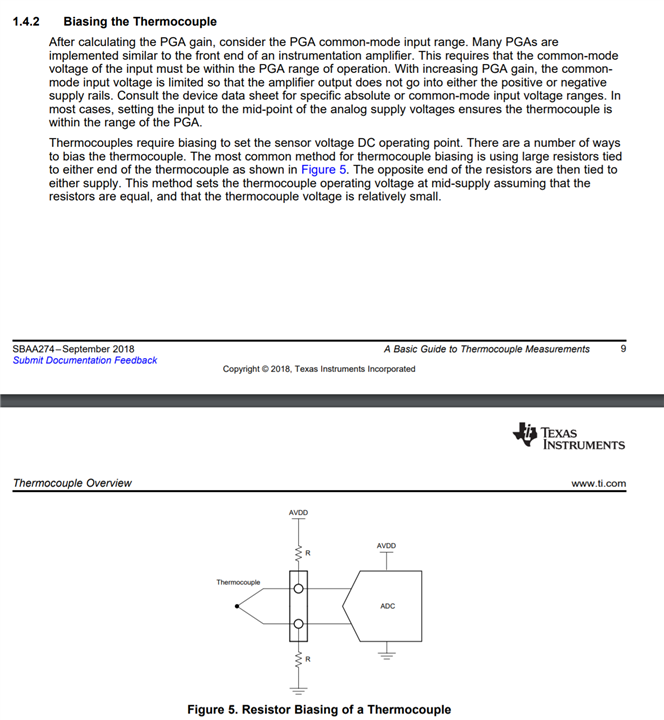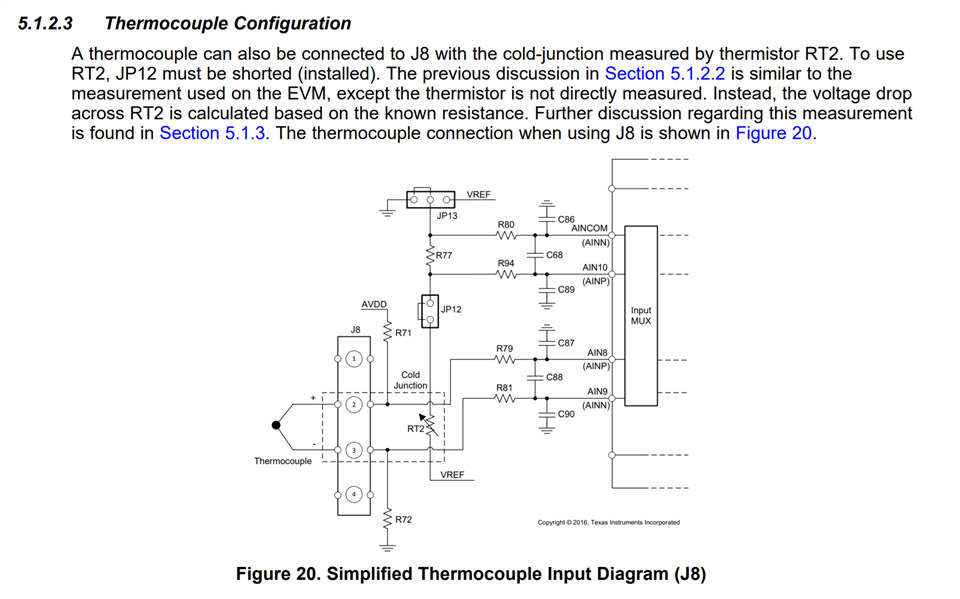I have a thermocouple measurement design using the ADS1262. The design is based on the evaluation boards for the ADS1262 and ADS114. In addition to those base designs I also have an ADS707 differential analog mux.
For testing purposes I am not cycling through any of the ADC channels. I have the ADC set to 100sps, continuous, and I have confirmed that the microcontroller is reading these samples fast enough.
If I enable the internal pull-up/pull-down resistors I find a couple strange issues:
* With the input shorted I see measured value of ~2mV. Shorting the input series resistors drop this down about 1mV each. This make it seems like there is a bias current on, and not the bias resistor.
* If I un-short the input I find that the positive rail is pulled to 2.5V and not 5V (which is what VCC is)
If I don't enable the bias resistor, and I short the input, I see normal values (I think). Something less than 90uV.
The figure below is a simplified version of the schematic:





